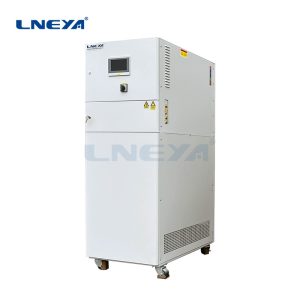Чем отличаются гликолевые чиллеры от чиллеров с водяным охлаждением?
Как гликолевые охладители, так и чиллеры могут использоваться для удовлетворительного отвода тепла, выделяемого в процессе производства. Принципиальное различие между этими двумя типами охладителей заключается в различии их температуры замерзания и способности к теплопередаче. ...
Pure ethylene glycol or a mixture of ethylene glycol and water has a much lower freezing point than pure water. This means that glycol-based chillers are better suited for low-temperature environments. In contrast, water has a better ability to retain and conduct heat in the associated process than glycol mixtures. As a result, the heat transfer efficiency for water chillers will be higher than for glycol chillers.
Water: Using water as a coolant is an economical method as water is readily available at minimal cost in most cases. Alternatively, purified water (deionized water, reverse osmosis) can be used in water-based chillers for greater cooling efficiency.
Ethylene Glycol: Ethylene glycol-based coolants consist of either ethylene glycol or propylene glycol. Although the two variants have similar physical properties, they should never be mixed. The main benefits of glycol coolants are improved corrosion resistance and freeze protection.
Why use ethylene glycol for cooling?
Using a glycol-water mixture as a coolant has several advantages over using plain water as a coolant. These advantages are due to its unique physical properties, which include a lower freezing point than water.
Похожие рекомендации
-
Advantages of LNEYA heat transfer oil heater
1024The heat transfer oil electric heater is a new type of thermal energy conversion device that uses electricity as the energy source and heat transfer oil as the heat transfer medium. It can provide circulating heat transfer oil of circulating pump ...
Посмотреть детали -
What is the refrigeration principle of the glycol chiller system
1264Glycol Chiller System , as we can tell fromits name, it is to use Glycol as the refrigeration agent for the chiller. In the all air environment, because of thelow temperature in the outdoors, it is impossible to use a cooling tower tosupply t...
Посмотреть детали -
How To Choose the Ultra Low Temperature Recirculating Chiller Expansion Valve?
1037Selection and installation of the expansion valve for ultra low temperature recirculating chillers: the selection of expansion valve plays an important role in the performance of the ultra low temperature recirculating chiller refrigeration system...
Посмотреть детали -
Криогенные охладители для процессов проточной химии лекарств
823Низкотемпературные охладители, используемые в процессах проточной химии (непрерывного производства) лекарств, являются одним из ключевых устройств, обеспечивающих протекание реакций в точных температурных условиях. Поточная химия - это технология непрерывного производства...
Посмотреть детали
 LNEYA Промышленные чиллеры Производитель Поставщик
LNEYA Промышленные чиллеры Производитель Поставщик













